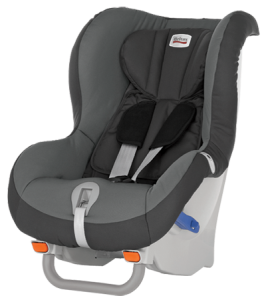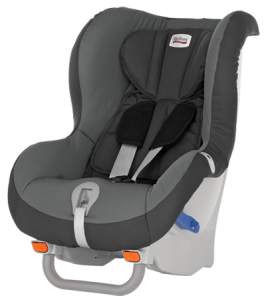
European Standards vs American Standards: Car Seat Edition
There are a few main differences between European car seats and American car seats, one of the most obvious being the European adoption of the ISOfix. This was recommended by the United Nations and utilized by the European Nations in the mid 1990s. The US National Highway Traffic Safety Administration (NHTSA) opted not to utilize this system, focusing more solely on the LATCH system because “there is likelihood that the support leg would be misused if the installation requires further action from the parent.”[1]
There are two ISOfix standards because it is taking so long for both car seat and car manufacturers to develop and agree on the new standards. There’s the “Universal” and the “Semi-Universal” (or “Vehicle Specific” — this is where the load leg comes in). It was introduced in 1997, became standard in 2004, and by June of 2006 all car seats had to meet this standard. As of February 2011, it is required by law that the system must be integrated into all new cars.
Universal ISOfix requires three anchorage points: two latches in the back and a top tether to stop the seat from projecting forward in a crash.
The Semi-Universal ISOfix requires the two latches in the back and then a third anchor point that is not a top tether. This is where the “support leg” comes in. This support leg essentially does what the top tether does; it matters more of what your car can take. There is a debate on which is a safer feature, but they do the same job, and neither side has come to any real conclusion.
Generally, you buy the base separately from the car seat in Europe. Using Britax as an example: they sell two infant car seat bases. There’s the BABY-SAFE ISOfix Base and the BABY-SAFE Belted Base. Both have the support leg as the third anchor option.
So in a nutshell: European Standards = LATCH system OR seat belt system + one other anchor point (either top tether or load leg)
American infant car seats cannot be used in Europe as they generally do not have a third anchor.
More Key Differences:
If using the seat belt for installation (and not the ISOfix system), the correct routing for forward facing must clearly be marked in RED and rear facing must be marked in BLUE.
The buckle on the seat must be operational by a single button or similar device. It must only lock when all pieces are in it. The button also has to be red and no other part of the buckle can be in this color (and is typically a lighter color, like grey or white). This makes it easier in case of an emergency. This means there are NO CHEST CLIPS. Chest clips are a very controversial “safety” feature in American and Canadian car seats. This will give you a brief insight on why people do not like chest clips.
I would like to note that there are fewer convertible Britax car seats in Britain than there are in the US. They also have a higher starting weight and lower ending weight than ours.
Note the differences between the belts on the two Cybex Aton seats shown on the left. They are the exact same car seat, with a few key differences that make their origin easily identifiable.
Impact Tests:
EUROPEAN STANDARD TESTING[2]:
- Frontal Impact: The car seat is loaded into a “vehicle” and thrust into 15,400+ pounds of reinforced concrete at 31 mph.
- Rear Impact: A 8ft by 2.5ft rigid steel impactor is thrust into the back of the “vehicle” at 20 mph.
- Overturning: The “vehicle” is rotated 2-5 degrees per second. When upside down, the head should not move more than 12 inches from its original position.
- Seat Belt: The seat belt must be buckled and unbuckled 5,000 times after impact testing to ensure that it still works.
AMERICAN STANDARD TESTING:
According the Evenflo website, a US company, “(US) Car seat safety standards require a frontal impact test with a 30 mph velocity change. This approximates the crash forces generated in a collision between a vehicle traveling 60 mph and a parked car of similar mass, or the energy produced in a fall from a three story building. There are currently no provisions in the U.S. and Canadian standards for side impact testing. The U.S. National Highway Traffic Safety Administration (NHTSA) is in the early stages of developing a child side impact test standard.”[3]
During my research, I discovered that neither Europe or the US have side impact testing, but I did discover that the US does not require test results to be posted. Manufacturers may post their results if they choose to, but it is not required by law. The car seats either pass or they don’t, and it’s up to the manufacturer to prove just how safe their car seat is compared to the others.
Check out our video roundup of the best Infant Car Seats of 2017!
Chelsea is a recent transplant to Boston and an up-and-coming car seat expert at our Brookline store.
The post European Standards vs American Standards: Car Seat Edition appeared first on Spilling the Beans - Magic Beans.





Comments
Leave a comment